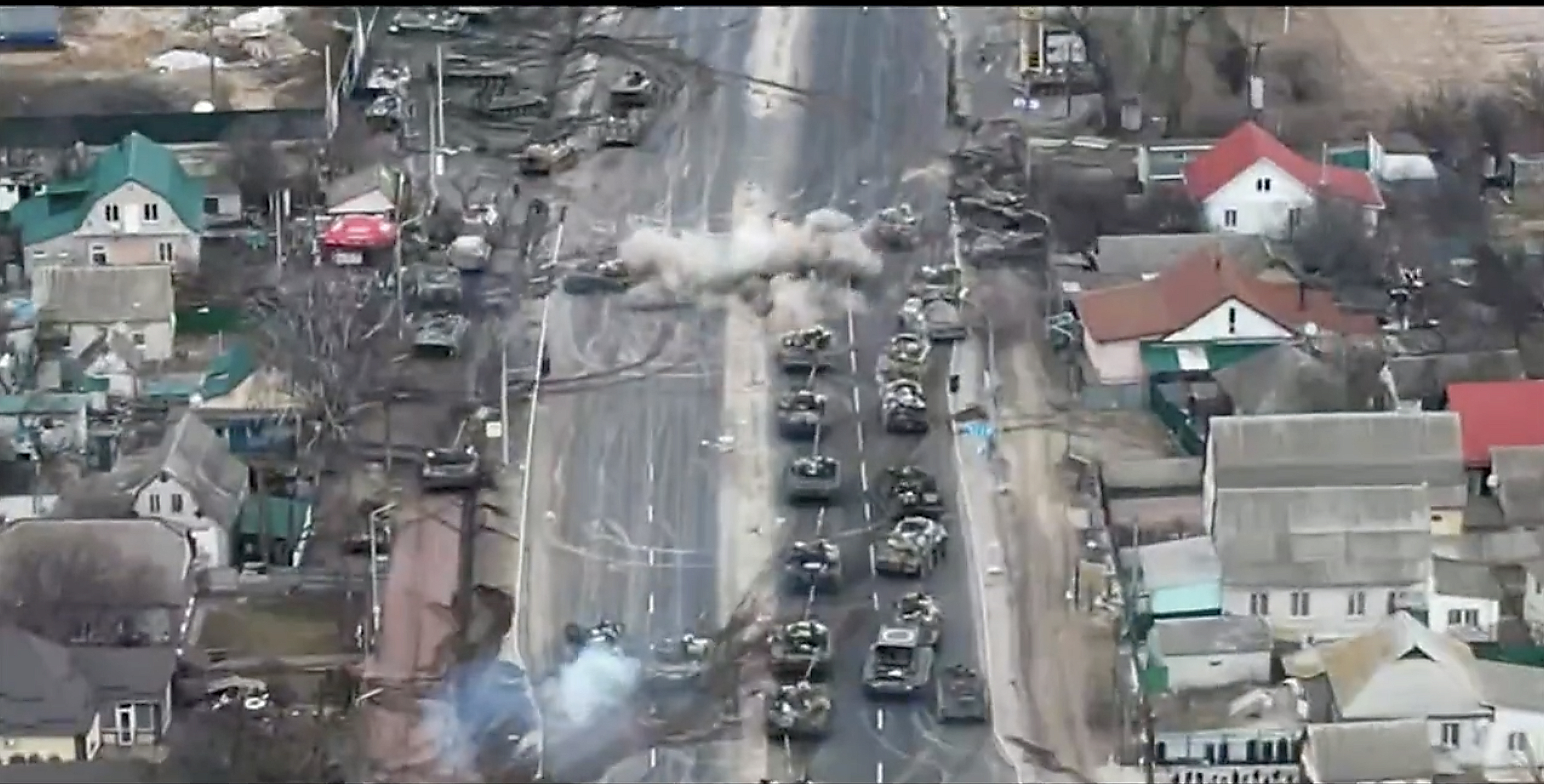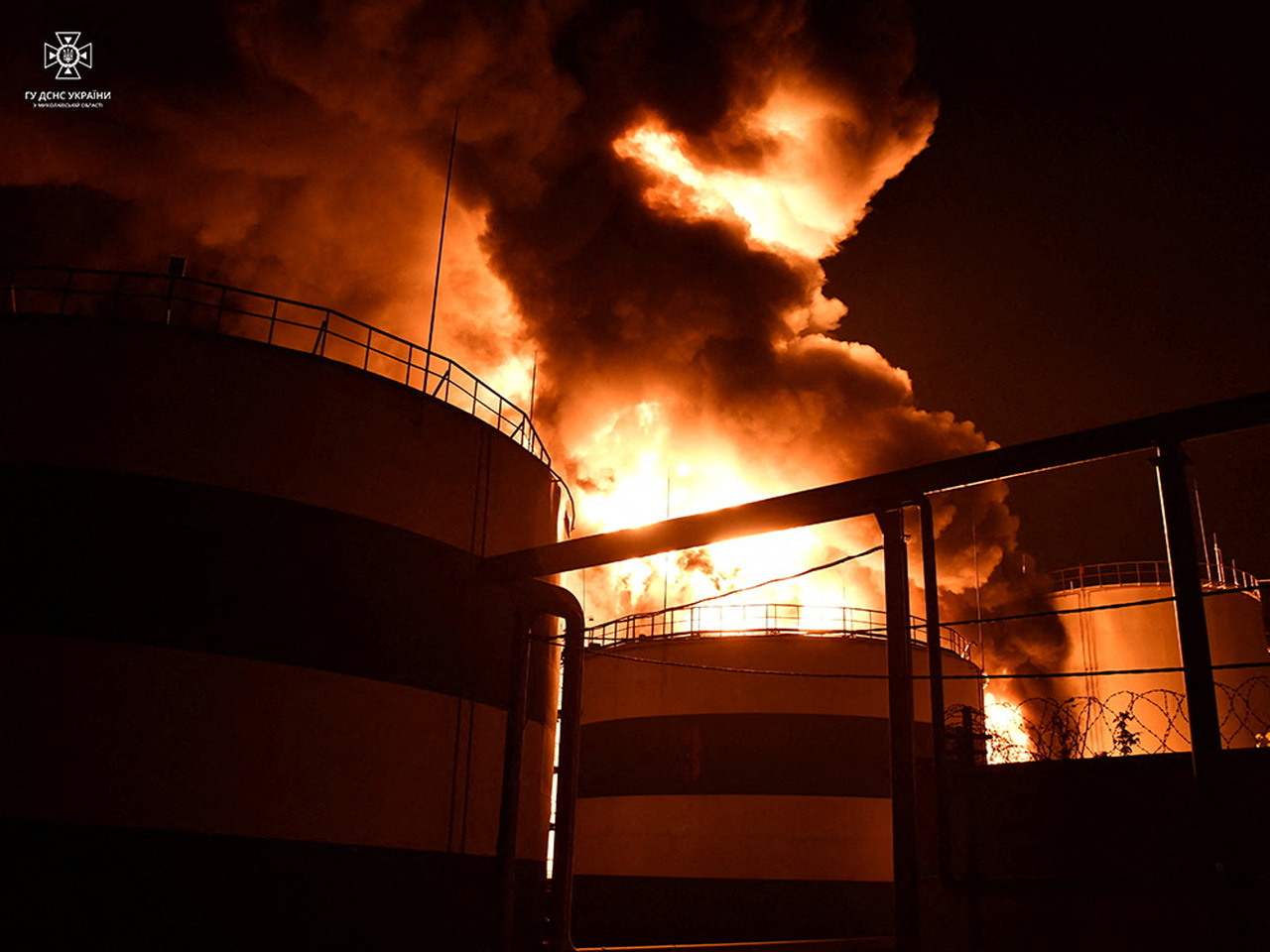Ukraine Seeking to Narrow Long-Range Missile Gap
Ukraine has negligible capabilities for missile strikes at ranges greater than 100 km. This gap in Ukrainian offensive systems slows the conduct of counter-offensives and will hinder its strategic isolation of Crimea, as well as defence and deterrence in the future. Filling this gap requires decisions by Ukraine’s main partners on supplying it with, primarily, ATACMS and Taurus missiles.
.jpg) Defense Ministry / Zuma Press / Forum
Defense Ministry / Zuma Press / Forum
Since June 2023, Ukraine has been conducting a counter-offensive in some sections of the long frontline, but this does not involve most of the new units rearmed with Western weapon systems. Its success in liberating occupied territories depends to a large extent on the ability to effectively destroy targets at a greater range than that provided by its heavy artillery. The military results of the war and Ukraine’s negotiating position in any ceasefire talks are dependent on its possession of long-range strike capabilities, which are still lacking.
Assistance Provided to Ukraine
Initially, Ukraine’s partners limited supplies of long-range guided missiles to defensive systems. This assistance was launched already in spring of 2022 and was not accompanied by any controversy in Ukraine or its partners. Ukraine first obtained two coastal defence systems with Harpoon anti-ship missiles with 120 km range. The first batches of the Harpoon were delivered by the U.S. and Denmark, and subsequent ones were promised by the UK, Spain, and the Netherlands. The presence of the Harpoons complicated Russia’s planning of amphibious landings and limited operations of its surface ships of the Black Sea Fleet.
In summer 2022, the rocket artillery of Ukraine was strongly augmented by HIMARS and MLRS launchers, allowing it to strike targets in the range of 80 km. Both platforms using GMLRS rockets disrupted Russian logistics and destroyed many frontline ammunition depots, facilitating successful counter-offensives by Ukraine. Decisions to transfer these systems were not controversial among the partners of Ukraine, which received 35-40 launchers successively from the U.S., the UK, Germany, France, and Italy. However, the short-term challenge has not been the availability of either platform (20-30 more are expected) but the need for a large stockpile of the GMLRS rockets (which are only produced by the U.S. defence industry).
In the context of the prolonged battle for Bakhmut and Russia’s strong defensive lines, built since late 2022, it may be also necessary to provide Ukraine with U.S. GMLRS-DPICM rockets with cluster munitions, which may require approval from Congress. Neither Ukraine nor the U.S. are party to the Convention on Cluster Munitions and both have these weapons in their inventories. According to the Pentagon, the supplies requested by Ukraine have been consulted with allies, and most of them accept transfer. However, initially Ukraine will receive 155mm DPICM artillery shells and not GMLRS cluster munitions. So far, the Biden administration has been reluctant to provide ATACMS ballistic missiles, which have a 300 km range and can be launched from the HIMARS and MLRS platforms. However, the UK took a different approach in spring 2023 when it delivered to Ukraine its Storm Shadow advanced cruise missiles with a range of 250 km. This same missile (called SCALP) will be delivered by France in summer-autumn this year. The Storm Shadow, which gives Ukraine the capability to strike targets deep in occupied areas, was not met with any military retaliation to the UK or France by Russia.
Ukraine’s Missile Capability Gap
Despite the delivered weapons, Ukraine still has a relatively negligible ability to destroy valuable targets at longer range. After the loss of its scientific and industrial facilities, destroyed by Russia by now, Ukraine no longer can produce Neptune anti-ship missiles, which have 280 km range (one or more sank the Russian guided-missile cruiser Moskva) or Hrim ballistic missiles with a 500 km range (these were used to hit the Saki airfield in Crimea). Both Ukrainian-made systems were produced in quantities limited to prototype launchers and missiles, so similar and spectacular strikes could not be repeated without some analogical Western missiles. For these reasons, Ukraine must resort to asymmetric and improvised options: naval drones (Sevastopol has been attacked several times this way), reconfigured reconnaissance drones (these struck the Engels and Dyaghilev strategic bomber bases), or small kamikaze drones (a couple of symbolic attacks on Moscow).
Without a change in the Ukrainian partners’ approaches to providing long-range weapons, it is difficult to even partially close the gap in the quality and quantity of Ukraine’s missile arsenal relative to the Russian. So far, Russia has used more than 5,000 ballistic and cruise missiles against Ukraine. However, the aggressor is not able to continue to fire this volume of missiles on cities in Ukraine and has been using kamikaze drones from Iran, even if Russia still produces several hundred different missiles annually. The Russian advantage is related to the fact that GMLRS rockets lack the range to destroy industrial centres, commands, deeper lines of defence, or ammunition and fuel stocks from the frontline. There are also obvious limits to the number of Storm Shadow/SCALP missiles available to Ukraine (the UK and France combined have at most about 1,000 of these missiles) as well as the Su-24 tactical bombers needed to carry and deliver them (Ukraine only has 5-6 of these planes remaining and there is no near-term alternative).
Main Risks for Ukraine and Its Partners
The U.S. has not yet decided to supply ATACMS to Ukraine, likely due to continued concerns about its use in strikes on targets within Russia. Germany seems to be guided by similar concerns, and lately has ruled out the transfer of Taurus cruise missiles, which have a range of 500 km. Although such a risk cannot be completely ruled out, it is unlikely Ukraine has hidden intentions to do this with ATACMS or Taurus. To date, all Ukrainian strikes on Russian territory have been carried out with Soviet-era or improvised with helicopter or drone systems. In case these missiles were used against targets outside the internationally recognised borders of Ukraine, its government would risk a slowing down, decreasing scale, or even loss of military assistance from key NATO partners.
Another Biden administration internal argument against the delivery of ATACMS is to preserve this capability for U.S. own needs. There is, however, no serious risk for the U.S. defence because reserves of these missiles in Europe may amount to 1,000-1,500 units and their range is too short for use in the Indo-Pacific. Moreover, the Pentagon is introducing successors to ATACMS that have a longer range, such as the PrSM ballistic missile or the ground-launched Tomahawk cruise missile, with respective ranges of 700 and 1,500 km. The only rational and not public U.S. argument for delaying several hundred ATACMS for to Ukraine is to preserve them for the post-war period, delivering missiles after some ceasefire and as an additional element of Western security guarantees for it. If that is the approach, ATACMS would strengthen Ukraine’s capabilities to deter future Russian aggression. However, in any likely case, it is possible to make supplies of the missiles conditional on an agreed list of potential targets and the geographical area available to Ukraine’s Western-provided missiles.
A revised approach by Ukraine’s partners is advisable also in the light of the situation of occupied Crimea. The success of Ukraine’s counter-offensive in the direction of Zaporizhzhia and/or Crimea will be hindered without missile and air support for ground troops. Without missile capabilities, Ukraine will also lack the chances to isolate the Russian forces in Crimea from supply lines with Russia. This gap will also complicate scenarios of breaking the Russian defence lines, or force the negotiation of some transitional status for Crimea. Although the delivery of new GL-SDB systems with a range of 150 km is expected in the autumn, these missiles have too small a warhead to destroy hardened targets. Driving Russia out may also require strikes on ships and bases of its Black Sea Fleet. For these reasons, Ukraine may be in need of the quick delivery of Swedish RBS-15 or American-Norwegian NSM missile systems, both with a range of 200 km and capable of destroying surface ground and maritime targets. Moreover, the advantages of these systems would go beyond the current needs of Ukraine, allowing for a systematic reduction of Russia’s naval activity in the Black Sea and deterring naval aggression in the future.
Recommendations
Similar to other and initially controversial forms of assistance to Ukraine (missile defence, tanks, and multi-role aircraft), the political will of its partners is necessary to partially fill the gap in its missile capabilities. The precedent of Storm Shadow/SCALP deliveries from the UK and France has not triggered Russian escalation against NATO and shows indeed its reluctance to risk open conflict with it, despite many Russian declared “red lines” and nuclear threat suggestions. Therefore, the benefits of stronger capabilities for Ukraine outweigh speculation of the risks of such missile transfers. Deliveries of advanced missile systems would quickly improve the position of Ukrainian troops on the battlefield and would isolate Russian forces in occupied Crimea. The concerns of the U.S. and Germany might be allayed by bilateral agreements with Ukraine defining military targets and areas where Western missiles can be used. The delays in ATACMS deliveries significantly reduce the chances of visible military success in the current Ukrainian counter-offensive. In contrast, a quick and even limited filling of Ukraine’s missile gap would complicate Russia’s calculations, which are based of the continuation of a war of attrition with Ukraine and the assumed exhaustion of resources and the political will of NATO and EU countries to support the defenders. Ukraine’s possession of a longer-range missile arsenal would also significantly strengthen its position in any negotiations of ceasefire terms or restoration of full control within the 1991 borders. Ukrainian capabilities for credible conventional missile retaliation would also weaken any further nuclear blackmail by Russia. Of no less importance is also the augmentation of Ukraine’s coastal defence through additional Harpoon launchers and receiving longer-range NSM or RBS-15 systems as soon as possible.




